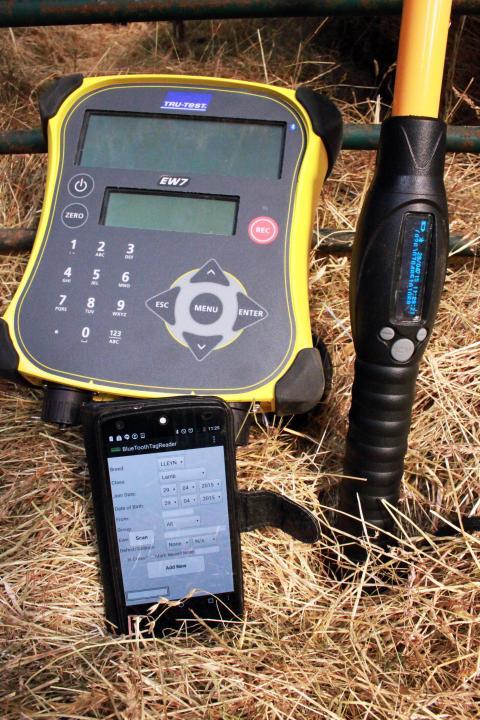Farmers looking to improve the performance of their flock are being urged to harness the technology available through Electronic Identification (EID).
Many farmers have now invested in EID technology in order to comply with legislative requirements, but are unsure how to use it in other ways that can benefit their business.
Farming Connect is running a series of EID roadshows in February, to help farmers learn more about how to harness the potential of their EID equipment. Farmers will be able to bring their EID equipment to the events and discuss how to get the most out of it, or those yet to invest in the technology will have a chance to find out more.
Sion Ifans, who will be assisting at the drop-in sessions, says using EID technology to record flock information beyond the legal requirements can be extremely useful to farmers.
“One of the basic functions of the technology is the ability to monitor performance,” he says. “Recording daily liveweight gains (DLWG) of lambs is particularly useful, especially as you can start to see the benefit of the information after two weighings.
“Farmers can monitor how the lambs are performing and make a lot of decisions based on accurate information that was relatively easy to collect. If some have high DLWG, they can decide whether to push them on to reach the right specification, or if an animal has low DLWG, they can take them out and try to find the reason it’s not performing. Sometimes just seeing the gains as they go along sparks an interest to do more with the technology.”
EID can also be used to link lamb performance back to the ewe, enabling farmers to identify animals that are more suited to their breeding system, or the commercial side of their business.
Sion Ifans says it is important to focus on one or two specific areas when starting out to record information with EID.
He adds: “Sometimes farmers record so much information that they are overwhelmed and are unsure what to do with it all, so it’s better to concentrate on one or two things. They will get more out of the equipment then.
“Sometimes it helps if someone from outside the sheep enterprise can sit down and look at the physical figures with them and identify how to potentially improve flock performance from data gathered via EID equipment and software.”
Farmers are welcome to bring along any data they have collected with EID to the roadshows to identify the data that could be most useful to their business.
Case study
Geraint Jones, Barhedyn, Machynlleth
Geraint Jones, of Barhedyn, Melin Byrhedyn, Machynlleth, who farms in partnership with his brother Wyn and mother Audrey, invested in EID equipment a year ago and started to see the benefits of the technology very quickly.
Having begun by recording sheep movements with EID, Geraint moved on to collecting lamb weights and data about his ewes and now records information from 480 of his 2,000 sheep with a stick reader which links to a printer and an app on his smartphone, giving him instant access to data.
He says: “Previously we kept the weight of the lambs in a diary, but it was not as detailed. The electronic information is definitely worth having as we can monitor their performance and pick up any issues straight away. We can then make decisions based on what is actually happening, it has taken the guesswork out of monitoring our flock performance.”
Geraint says there is no need for farmers to be afraid of embracing EID technology.
“The biggest thing with the technology is the fear factor, but when people can see it working and the ease with which the data is collected it opens their eyes. Once you become more familiar with the equipment it soon becomes second nature.”
He is also quick to allay concerns about technology failure: “I was worried about losing tags, but it hasn’t been much of an issue. The stick reader is really quick and hasn’t failed once, neither has the Bluetooth for the printer. The printer has failed to work once, but that was only because there was no paper in it!”
Geraint has been inspired to maximise the benefits available with EID and has now invested in computer software to keep more detailed information about his flock and is considering buying a hand-held data reader and electronic weigh crate and shedding system.

